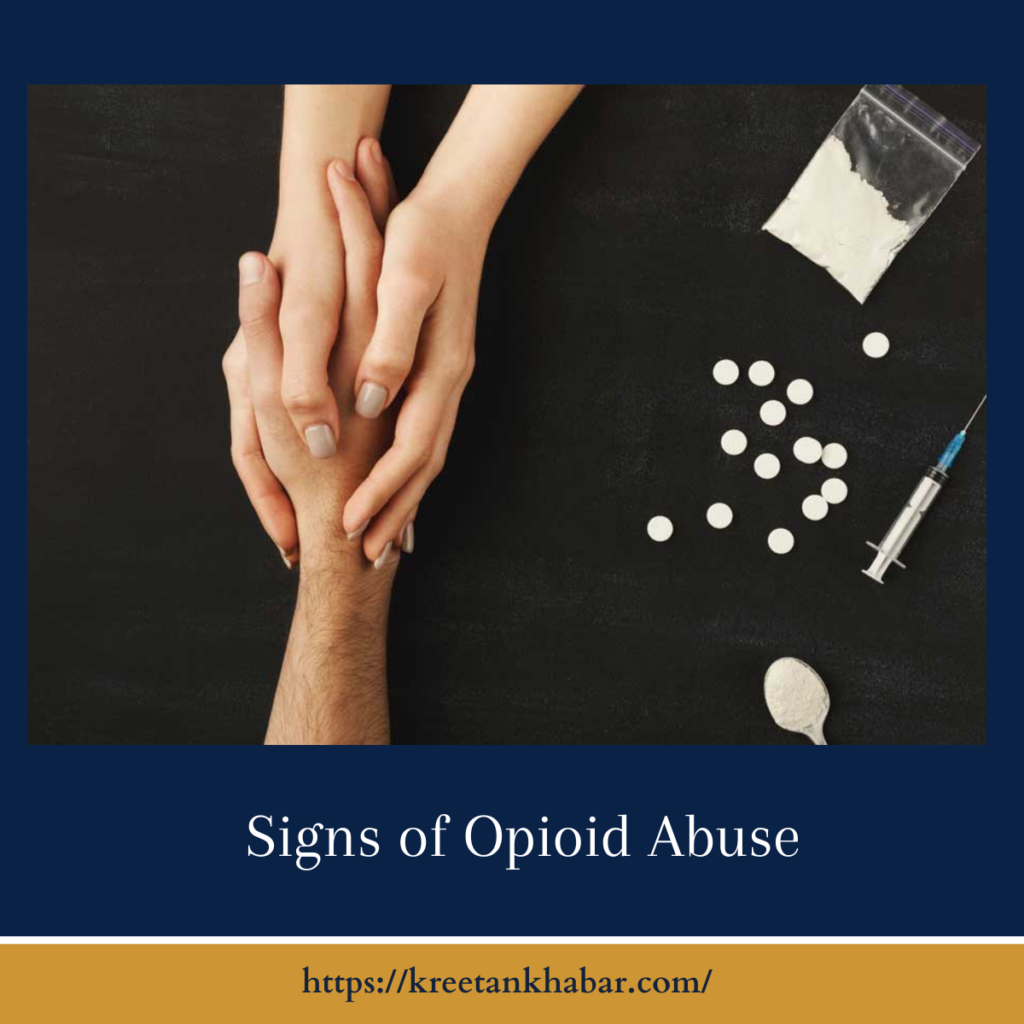Signs of Opioid Abuse
Introduction:
In the shadows of pain relief, a silent symphony plays out—one of opioid medications providing solace to those in physical distress. However, this symphony can turn discordant when the subtle notes of therapeutic use transform into the disquieting tones of opioid abuse. Understanding the signs of opioid abuse is crucial in unraveling the complexities of this epidemic. In this exploration, we delve into the nuanced indicators that compose the haunting melody of opioid abuse, seeking to shed light on the subtle cues that often elude the untrained eye.

The Prelude: Therapeutic Intentions:
Opioid medications, hailed for their potent pain-relieving properties, often begin their journey with therapeutic intentions. Prescribed to alleviate severe pain following surgeries, injuries, or chronic conditions, opioids serve a vital role in managing discomfort. However, the transition from therapeutic use to potential abuse is a delicate metamorphosis that requires keen observation.
The Crescendo: signs of opioid abuse of Opioid Abuse:
- Changes in Behavior: The initial notes of concern often manifest as changes in behavior. Individuals may exhibit increased secrecy, social withdrawal, or a noticeable decline in responsibilities at work or home.
- Physical Changes: Opioid abuse composes a symphony of physical changes, including drowsiness, nodding off at inappropriate times, and fluctuations in weight. The eyes may appear glazed, and coordination may be visibly impaired.
- Mood Swings and Emotional Turmoil: The emotional undertones of opioid abuse reveal themselves through erratic mood swings. Individuals may oscillate between euphoria and irritability, displaying heightened sensitivity to stimuli.
- Social Isolation: Opioid abuse often orchestrates a movement towards social isolation. Individuals may distance themselves from family and friends, preferring the solitary refuge where the symphony of abuse plays without judgment.
- Financial Strain: The financial strains of opioid abuse compose a dissonant note in the symphony. The cost of obtaining opioids, especially when acquired illicitly, can lead to financial difficulties and a visible decline in overall economic well-being.
- Doctor Shopping and Prescription Manipulation: A subtle yet telling movement in the opioid symphony is the act of “doctor shopping” or manipulating healthcare providers to obtain multiple prescriptions. This behavior reflects an attempt to sustain the supply of opioids beyond medically necessary limits.
- Tolerance and Increased Dosages: The crescendo of opioid abuse often includes the development of tolerance, prompting individuals to seek higher dosages to achieve the desired effects. This escalating pattern can lead to dangerous levels of opioid consumption.
- Neglect of Responsibilities: Opioid abuse can take center stage, overshadowing responsibilities at home, work, or school. Neglecting duties and obligations becomes a recurring theme as the symphony of abuse intensifies.
The Divergent Movements: signs of opioid abuse of Overdose:
In the tragic movements of signs of opioid abuse, the risk of overdose introduces a dire divergence. signs of opioid abuse of overdose include respiratory depression, pinpoint pupils, loss of consciousness, and, in extreme cases, cardiac arrest. Recognizing these emergency signals is crucial for timely intervention and the potential reversal of overdose effects with naloxone.
The Coda: Seeking Harmony through Intervention:
As the symphony of signs of opioid abuse reaches its crescendo, intervention becomes paramount. Recognizing the signs of opioid abuse, offering support, and encouraging professional help are instrumental in guiding individuals toward the path of recovery. Treatment modalities, including medication-assisted therapy, counseling, and support groups, contribute to a nuanced approach aimed at restoring harmony to those ensnared by the silent symphony of signs of opioid abuse. Education, awareness, and compassionate intervention stand as the notes that can orchestrate a brighter future for those navigating the complex landscape of opioid misuse.
Read also : Exploring the Delightful Boost of the Green Tea Shot 2023